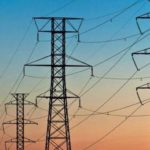Hurricane Harvey: Oil prices go up as US production drops
 Oil prices rose on Friday as U.S. crude production was hit harder by Hurricane Harvey than expected, with even bigger storm Irma heading for Florida and threatening to cause more disruption to the petroleum industry.
Oil prices rose on Friday as U.S. crude production was hit harder by Hurricane Harvey than expected, with even bigger storm Irma heading for Florida and threatening to cause more disruption to the petroleum industry.
U.S. West Texas Intermediate (WTI) crude futures CLc1 were at $49.23 barrel at 0456 GMT, 14 cents or 0.3 percent above their last settlement.
Brent crude futures LCOc1, the benchmark for oil prices outside the United States, were up 26 cents to $54.75 a barrel, just shy of their Friday peak of $54.79 a barrel, their highest level since April.
“WTI may break higher as storms limit crude processing…U.S. oil production facilities haven’t fully recovered from Hurricane Harvey,” said Fawad Razaqzada, market analyst at futures brokerage Forex.com.
Hurricane Harvey hit the U.S. Gulf coast two weeks ago, and crude prices initially slumped because almost a quarter of the country’s huge refinery industry was knocked out by the storm, cutting demand for crude oil, refining’s lifeblood.
But as the refinery sector gradually recovers, so is its crude processing.
“Most refineries are restarting and we expect a near-full recovery by month-end,” U.S. investment bank Jefferies said.
Harvey’s impact was also felt in oil production. U.S. oil output fell by almost 8 percent, from 9.5 million barrels per day (bpd) to 8.8 million bpd, according to the Energy Information Administration (EIA). C-OUT-T-EIA
Port and refinery closures along the Gulf coast and harsh sea conditions in the Caribbean have also impacted shipping.
“Imports (of oil) to the U.S. Gulf Coast fell to levels not seen since the 1990s,” ANZ bank said.
Traders said it would take weeks for the U.S. petroleum industry to return to full capacity, and that under the current conditions it was difficult to identify fundamental market trends.
“The data for this week and next will be taken with a grain of salt as the underlying trend will be obscured by the effects of the hurricane,” said William O‘Loughlin, investment analyst at Rivkin Securities.
Even as the oil industry continues to grapple with the fallout from Harvey, a much bigger Hurricane was lashing the Caribbean islands and heading for the United States.
Hurricane Irma, which has become one of the biggest storms ever measured – picking up the Twitter hashtag #irmageddon – on Friday hit the Dominican Republic and Haiti, heading for Cuba and the Bahamas. It was predicted to hit Florida by Saturday.
The U.S. National Hurricane Center (NHC) said that Irma was still a Category 5 Hurricane, with wind speeds of 175 miles per hours (280 km/h).
“Any further disruptions in oil and gas production could further extend the rally in energy prices or at minimum keep prices bid (up) until the threat of tropical storms dissipate,” said Forex.com analyst Razaqzada. REUTERS








